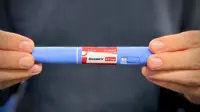India raises export tax on iron ore lumps by 5 per cent, mining policy needed
30 Apr 2010
The government has once again raised the export duty on iron ore lumps by 5 per cent to safeguard domestic supplies to steelmakers, but is still missing the larger picture of a sustainable and coherent mining policy, commentators say.
With the global iron ore price on the fast track since the middle of last year, and Indian steel makers crying hoarse to stop the runaway exports of the mineral to China, the government yesterday decided to raise the price of iron ore lumps from 10 per cent to 15 per cent.
After raising the export duty on iron ore lumps by 5 percentage points to 10 per cent and on iron ore fines to 5 per cent from nil in December 2009 (See: India raises export duty on iron ore by 5 per cent), the government decided to raise export duty only on lumps following pressure from the steel industry to curb excess exports of iron ore in order to meet local demand. (See: Steel ministry wants 20 per cent duty on iron ore to curb export)
Since iron ore fines constitute about 85 per cent of the Indian iron ore export, the government did not raise the duty on this grade of ore since the country's steelmakers do not have the expensive finex technology or sintering facility to refine the fines, which can be then used in the making of steel.
By raising the export duty on lumps, the government hopes to drastically reduce the export of this grade of ore so that the Indian steelmakers do not have to buy iron ore lumps from the spot market, which has soared to as high as $158 a tonne and the new average quarterly benchmark price of $120 a tonne. (See: BHP Billiton almost doubles iron ore price for Asian steelmakers)
This is a massive 100-per cent price hike from the $60-a-tonne price settled through the annual benchmark contract system for 2009-10 period.
Thr price of coking coal, also a key mineral used to fire the furnaces of steel mills, has been reset at nearly 55 to 65 per cent higher this year compared to last year.
Iron ore is the raw material used to make pig-iron, which in turn, is one of the main raw materials to make steel. About 98 per cent of the iron ore that is mined globally is used to make steel, which many analysts regard as the most important commodity in the world after oil.
The production of iron ore in the country in the 2008-2009 was 227.64 million tonnes, and India, the fourth largest exporter of the ore after Vale of Brazil, and Anglo Australian miners Rio Tinto and BHP Billiton, exported about 106 million tonnes during the year, of which, 90.1 million tonnes was bought by China.
India's export of iron ore to China rose dramatically in the last six months of 2009 as Chinese steel production shot up due to its government implementing a $586- billion stimulus package, most of which went into infrastructure building as well as its fast expanding automobile industry.
Indian iron ore exporters, who were selling the mineral at the spot market, booked heavy profits as cash prices for 62 per cent iron-content exported to China rose to record levels to reach $131.20 a metric ton during the first week of January 2010.
According to the Steel Index, this price was the highest in at least 13 months and about 50-per cent higher than the contract prices signed by the big three miners with Japanese and Korean mills for last year.
India, the world's fifth largest producer of steel, is expected to produce about 60 million tonnes in the current financial year till March 2010. Till 2012, India's steel consumption is expected to grow at nearly 16 per cent annually.



















